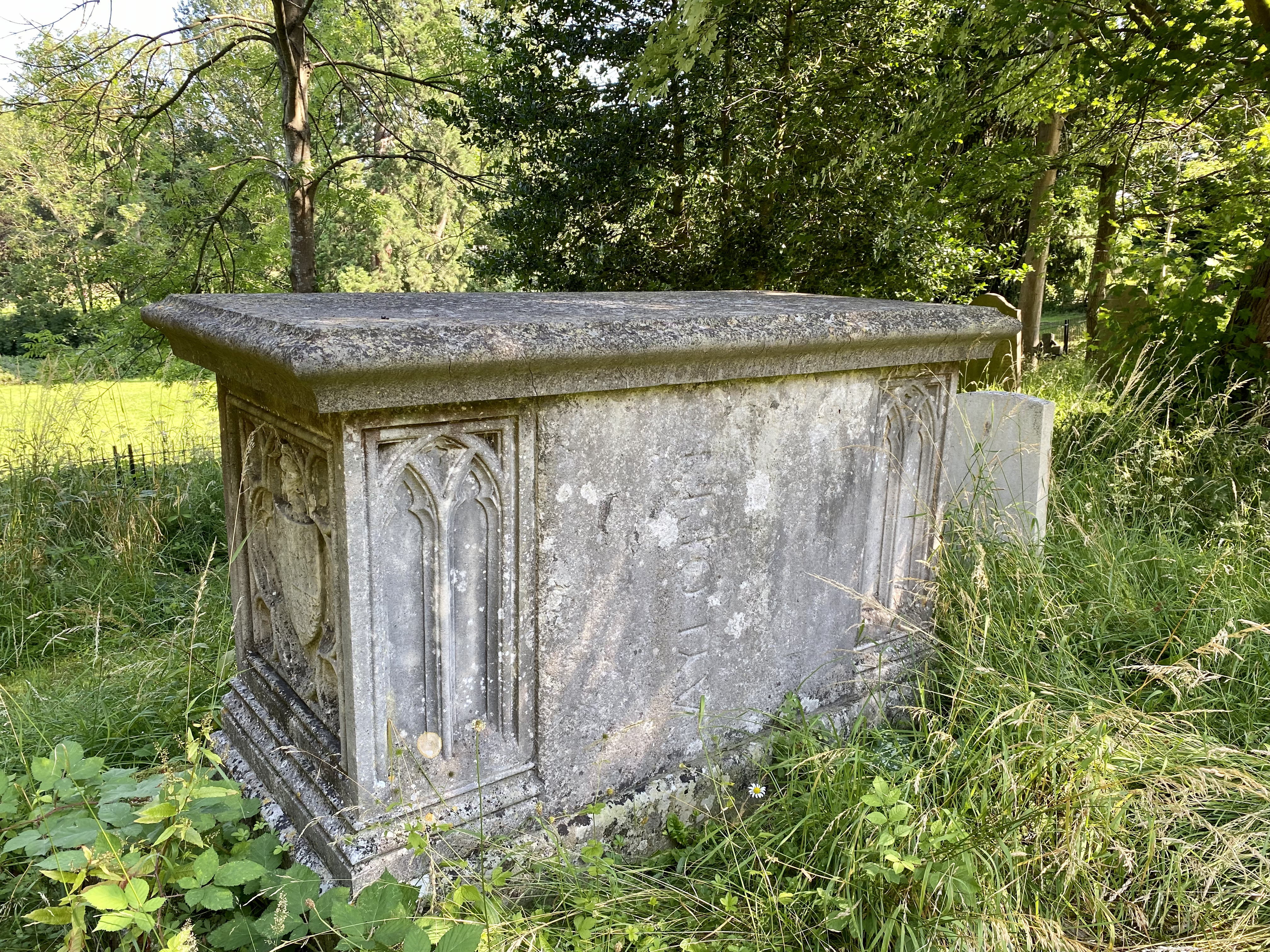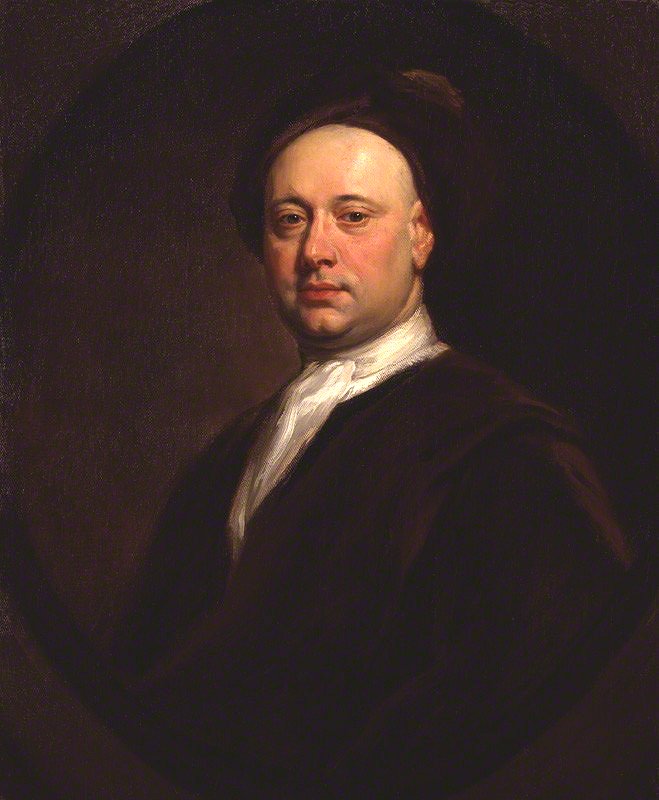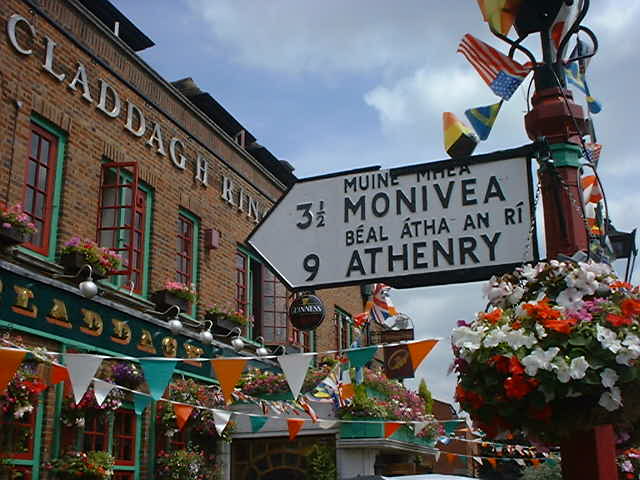|
Joseph Ayloffe
Sir Joseph Ayloffe, 6th Baronet FRS, FSA (1708 – 19 April 1781, London) was an English antiquary. Life He was the great-grandson of Sir William Ayloffe, 1st Baronet, through his third wife (Alice, daughter of James Stokes of Stoke near Coventry), their first son was Joseph Ayloffe, Joseph Ayloffe, barrister-at-law of Gray's Inn and sometime recorder of Kingston upon Thames, who died in 1726 and was this man's father. Joseph was born in Sussex, and became 6th Baronet Ayloffe, of Braxted Magna; on his death, his baronetcy became extinct. Ayloffe was educated at Westminster School, admitted a student of Lincoln's Inn in 1724, and spent some time at St John's College, Oxford before 1728. In December 1730 he succeeded, as sixth in succession, to the family baronetcy on the death of his unmarried cousin, the Rev. Sir John Ayloffe, a descendant of the first family of the original holder of the title. Sir Joseph seems early in life to have shown an interest in antiquities. He rec ... [...More Info...] [...Related Items...] OR: [Wikipedia] [Google] [Baidu] |
Royal Society
The Royal Society, formally The Royal Society of London for Improving Natural Knowledge, is a learned society and the United Kingdom's national academy of sciences. The society fulfils a number of roles: promoting science and its benefits, recognising excellence in science, supporting outstanding science, providing scientific advice for policy, education and public engagement and fostering international and global co-operation. Founded on 28 November 1660, it was granted a royal charter by King Charles II as The Royal Society and is the oldest continuously existing scientific academy in the world. The society is governed by its Council, which is chaired by the Society's President, according to a set of statutes and standing orders. The members of Council and the President are elected from and by its Fellows, the basic members of the society, who are themselves elected by existing Fellows. , there are about 1,700 fellows, allowed to use the postnominal title FRS (Fellow of the ... [...More Info...] [...Related Items...] OR: [Wikipedia] [Google] [Baidu] |
Bridewell Hospital
Bridewell Palace in London was built as a residence of King Henry VIII and was one of his homes early in his reign for eight years. Given to the City of London Corporation by his son King Edward VI for use as an orphanage and place of correction for wayward women, Bridewell later became the first prison/poorhouse to have an appointed doctor. It was built on the banks of the Fleet River in the City of London between Fleet Street and the River Thames in an area today known as Bridewell Place, off New Bridge Street. By 1556 part of it had become a jail known as Bridewell Prison. It was reinvented with lodgings and was closed in 1855 and the buildings demolished in 1863–1864. The name "Bridewell" subsequently became a common name for a jail, used not only in England but in other cities colonised by Britain including Dublin, Chicago and New York. History Bridewell Palace The palace was built on the site of the medieval St Bride's Inn directly south of St Bride's Church at a ... [...More Info...] [...Related Items...] OR: [Wikipedia] [Google] [Baidu] |
John Leland (antiquary)
John Leland or Leyland (13 September, – 18 April 1552) was an English poet and antiquary.Carley (2006), "Leland, John (''ca''. 1503–1552)" Leland has been described as "the father of English local history and bibliography". His ''Itinerary'' provided a unique source of observations and raw materials for many subsequent antiquaries, and introduced the county as the basic unit for studying the local history of England, an idea that has been influential ever since. Early life and education Most evidence for Leland's life and career comes from his own writings, especially his poetry. He was born in London on 13 September, most probably in about 1503, and had an older brother, also named John. Having lost both his parents at an early age, he and his brother were raised by Thomas Myles. Leland was educated at St Paul's School, London, under its first headmaster, William Lily. It was here that he already met some of his future benefactors, notably William Paget. Leland wa ... [...More Info...] [...Related Items...] OR: [Wikipedia] [Google] [Baidu] |
Philip Morant
Philip Morant (6 October 1700 – 25 November 1770) was an English clergyman, author and historian. Education He was educated at John Roysse's Free School in Abingdon (now Abingdon School) and Pembroke College, Oxford, eventually taking his master's degree at Sidney Sussex College, Cambridge in 1729. Career Ordained in 1722, he began his association with the county of Essex with a curacy at Great Waltham near Chelmsford in 1722. He was the Chaplain of the English Episcopal Church in Amsterdam from 1732 to 1734. In 1737 he became both the Rector of St Mary-at-the-Walls, Colchester as well as Rector of Aldham in Essex. During his time in Colchester, Morant wrote ''The History and Antiquities of Colchester'', published in 1748; and his county history, ''The History and Antiquities of the County of Essex'', published in two volumes between 1763 and 1768. He also conducted a number of excavations of Roman sites in and around the town. He married Anne Stebbing in 1739 and they ha ... [...More Info...] [...Related Items...] OR: [Wikipedia] [Google] [Baidu] |
George Vertue
George Vertue (1684 – 24 July 1756) was an English engraver and antiquary, whose notebooks on British art of the first half of the 18th century are a valuable source for the period. Life Vertue was born in 1684 in St Martin-in-the-Fields, London, his father, perhaps a tailor, and mother are noted as 'Roman Catholic'. At the age of 13, he was apprenticed to a prominent heraldic engraver of French origin who became bankrupt and returned to France. Vertue worked seven years under Michael Vandergucht, before operating independently. He was amongst the first members of Godfrey Kneller's London Academy of Painting, who had employed him to engrave portraits. citing: Walpole's ''Anecdotes of Painting''; Nichols's ''Literary Anecdotes'', ii. 246; Chester's ''Westminster Abbey Reg.''; Dodd's manuscript ''Hist. of English Engravers'' in Brit. Mus. (Addit. MS. 33406). It was there that he became a pupil of Thomas Gibson, a leading portrait painter. Vertue had a deep interest in antiqu ... [...More Info...] [...Related Items...] OR: [Wikipedia] [Google] [Baidu] |
Archæologia (London)
Archaeologia or Archæologia may refer to: *''Archaeologia Cambrensis'', an archaeological and historical scholarly journal, published annually in Wales by the Cambrian Archaeological Association, containing excavation reports, book reviews, and historical essays. It also includes society notes and accounts of field visits *''Archaeologia Cantiana The Kent Archaeological Society was founded in 1857 to promote the study and publication of archaeology and history, especially that pertaining to the ancient county of Kent in England. This includes the modern administrative county as well as area ...'', an annual journal published by the Kent Archaeological Society on the archaeology and history of Kent * ''Archaeologia'' (London), an international journal published by the Society of Antiquaries of London *'' Archaeologia Scotica: Transactions of the Society of Antiquaries of Scotland'' *'' Archaeologia Polona'', a journal published in English annually since 1958 by the Institute of ... [...More Info...] [...Related Items...] OR: [Wikipedia] [Google] [Baidu] |
Suffolk
Suffolk () is a ceremonial county of England in East Anglia. It borders Norfolk to the north, Cambridgeshire to the west and Essex to the south; the North Sea lies to the east. The county town is Ipswich; other important towns include Lowestoft, Bury St Edmunds, Newmarket, and Felixstowe which has one of the largest container ports in Europe. The county is low-lying but can be quite hilly, especially towards the west. It is also known for its extensive farming and has largely arable land with the wetlands of the Broads in the north. The Suffolk Coast & Heaths and Dedham Vale are both nationally designated Areas of Outstanding Natural Beauty. History Administration The Anglo-Saxon settlement of Suffolk, and East Anglia generally, occurred on a large scale, possibly following a period of depopulation by the previous inhabitants, the Romanised descendants of the Iceni. By the fifth century, they had established control of the region. The Anglo-Saxon inhabitants later b ... [...More Info...] [...Related Items...] OR: [Wikipedia] [Google] [Baidu] |
Joshua Kirby
Joshua Kirby (1716, Parham, Suffolk – 1774, Kew), often mistakenly called John Joshua Kirby, was an English 18th-century landscape painter, engraver, writer, draughtsman and architect famed for his publications and teaching on linear perspective based on Brook Taylor's mathematics. Biography Joshua was the second of five sons of topographer John Kirby. In early life he assisted his father in the preparation of his important Survey of Suffolk, which took the form of a volume (1735) entitled ''The Suffolk Traveller'', an extensive gazetteer in which the parishes and towns, and the principal landowners, seats, advowsons, antiquities and industries of the two counties of West and East Suffolk were described, the text counterpart of John Kirby's County Map published in 1736. In 1739 Joshua married Sarah Bull, and his children Sarah (afterwards Mrs. Sarah Trimmer) and William soon followed. From an early age he was very studious, but, showing special aptitude as an artist, he set ... [...More Info...] [...Related Items...] OR: [Wikipedia] [Google] [Baidu] |
Encyclopédie
''Encyclopédie, ou dictionnaire raisonné des sciences, des arts et des métiers'' (English: ''Encyclopedia, or a Systematic Dictionary of the Sciences, Arts, and Crafts''), better known as ''Encyclopédie'', was a general encyclopedia published in France between 1751 and 1772, with later supplements, revised editions, and translations. It had many writers, known as the Encyclopédistes. It was edited by Denis Diderot and, until 1759, co-edited by Jean le Rond d'Alembert. The ''Encyclopédie'' is most famous for representing the thought of the Enlightenment. According to Denis Diderot in the article "Encyclopédie", the ''Encyclopédies aim was "to change the way people think" and for people (bourgeoisie) to be able to inform themselves and to know things. He and the other contributors advocated for the secularization of learning away from the Jesuits. Diderot wanted to incorporate all of the world's knowledge into the ''Encyclopédie'' and hoped that the text could dissemina ... [...More Info...] [...Related Items...] OR: [Wikipedia] [Google] [Baidu] |
Jean Le Rond D'Alembert
Jean-Baptiste le Rond d'Alembert (; ; 16 November 1717 – 29 October 1783) was a French mathematician, mechanician, physicist, philosopher, and music theorist. Until 1759 he was, together with Denis Diderot, a co-editor of the ''Encyclopédie''. D'Alembert's formula for obtaining solutions to the wave equation is named after him. The wave equation is sometimes referred to as d'Alembert's equation, and the fundamental theorem of algebra is named after d'Alembert in French. Early years Born in Paris, d'Alembert was the natural son of the writer Claudine Guérin de Tencin and the chevalier Louis-Camus Destouches, an artillery officer. Destouches was abroad at the time of d'Alembert's birth. Days after birth his mother left him on the steps of the church. According to custom, he was named after the patron saint of the church. D'Alembert was placed in an orphanage for foundling children, but his father found him and placed him with the wife of a glazier, Madame Rousseau, with who ... [...More Info...] [...Related Items...] OR: [Wikipedia] [Google] [Baidu] |
Denis Diderot
Denis Diderot (; ; 5 October 171331 July 1784) was a French philosopher, art critic, and writer, best known for serving as co-founder, chief editor, and contributor to the ''Encyclopédie'' along with Jean le Rond d'Alembert. He was a prominent figure during the Age of Enlightenment. Diderot initially studied philosophy at a Jesuit college, then considered working in the church clergy before briefly studying law. When he decided to become a writer in 1734, his father disowned him. He lived a bohemian existence for the next decade. In the 1740s he wrote many of his best-known works in both fiction and non-fiction, including the 1748 novel ''The Indiscreet Jewels''. In 1751, Diderot co-created the ''Encyclopédie'' with Jean le Rond d'Alembert. It was the first encyclopedia to include contributions from many named contributors and the first to describe the mechanical arts. Its secular tone, which included articles skeptical about Biblical miracles, angered both religious and ... [...More Info...] [...Related Items...] OR: [Wikipedia] [Google] [Baidu] |
Hendon
Hendon is an urban area in the Borough of Barnet, North-West London northwest of Charing Cross. Hendon was an ancient manor and parish in the county of Middlesex and a former borough, the Municipal Borough of Hendon; it has been part of Greater London since 1965. Hendon falls almost entirely within the NW4 postcode, while the West Hendon part falls in NW9. Colindale to the north-west was once considered part of Hendon but is today separated by the M1 motorway. The district is most famous for the London Aerodrome which later became the RAF Hendon; from 1972 the site of the RAF station was gradually handed over to the RAF Museum. The railways reached Hendon in 1868 with Hendon station on the Midland Main Line, followed by the London Underground further east under the name Hendon Central in 1923. Brent Street emerged as its commercial centre by the 1890s. A social polarity was developed between the uphill areas of Hendon and the lowlands around the railway station. Hendon is l ... [...More Info...] [...Related Items...] OR: [Wikipedia] [Google] [Baidu] |



.jpeg)



